Range 1,500 km Cruise speed 400 km/h First flight 1972 | Wingspan 32 m Length 58 m | |
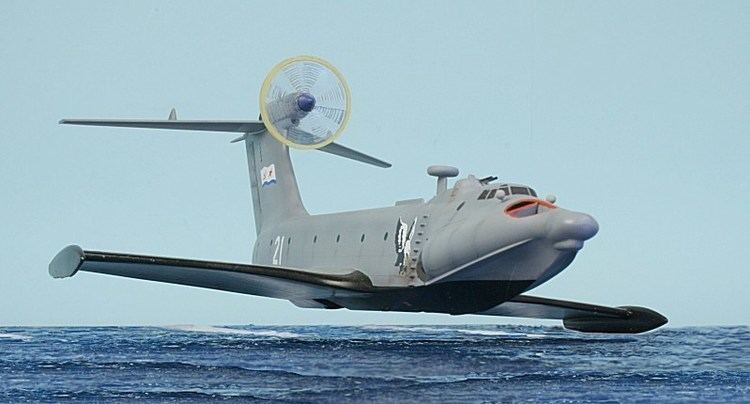 | ||
Manufacturer Central Hydrofoil Design Bureau Engine types Kuznetsov NK-12, Kuznetsov NK-8 | ||
A 90 orlyonok
The A-90 Orlyonok (Russian: Орлёнок, English: "Eaglet") is a Soviet ekranoplan (a ground effect vehicle) that was designed by Rostislav Evgenievich Alexeyev of the Central Hydrofoil Design Bureau.
Contents
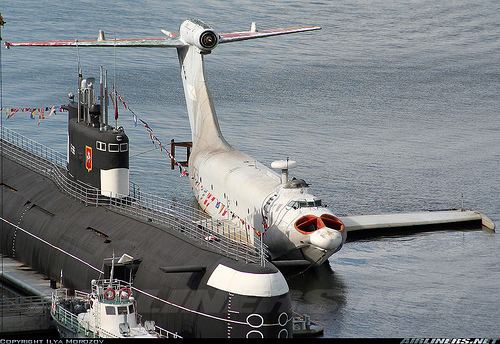
The A-90 uses ground effect to fly a few meters above the surface. The Russians classify it as Ekranoplan Class B - it can achieve an altitude of 3,000 m (9,800 ft), placing between Class A - which is limited to ground effect, and Class C, which exploits the ground effect only during take-offs and landings.
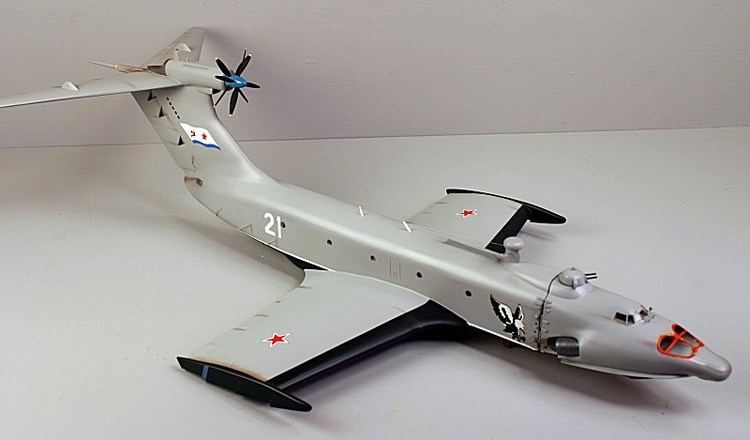
History

The Soviet Navy command of the 1960s was very interested in a fast military transport capable of carrying a large payload. The Central Hydrofoil Design Bureau was one of the organizations working on this top secret project, about which little was known until the fall of the Soviet Union.

Chief Designer R.E. Alexeyev designed several prototypes in the 1960s. At the start of the 1970s, Alexeyev designed a medium-sized Ekranoplan to be used as a military transport. The new vehicle was named "Orlyonok" ("Eaglet"). The first flying unit (S-23) was initially tested on the Volga River in the autumn of 1972, and the next year dismantled and transported to the Caspian Sea for continued testing. In 1975 the S-23 crashed during testing, later proved to be due to a deficiency in the alloy used for the hull. A different alloy was used in all subsequent units built.
Development and design
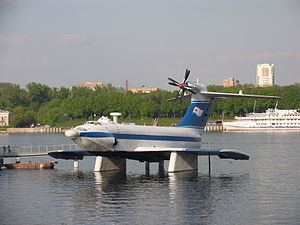
The Orlyonok was designed as a transport and also as a beach assault vehicle. Unlike other Soviet Ekranoplan designs, the Orlyonok was amphibious and was equipped with wheels for beaching and land based takeoffs.
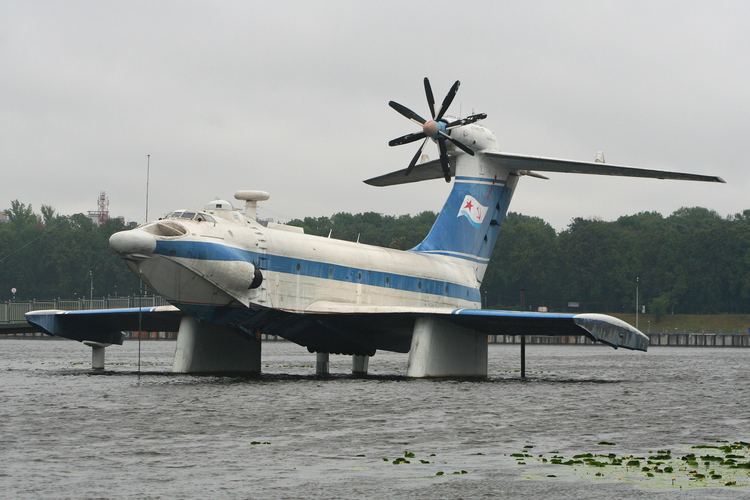
The layout of the engines on the Orlyonok was unusual and a testament of the special needs of such an unconventional aircraft. Mounted in the top of the tail, it featured a massive Kuznetsov NK-12 turboprop, the most powerful turboprop ever made, which provided cruise power. The nose of the aircraft mounted two turbofan engines with the intakes on top of the nose and the exhaust along the side of the fuselage, the thrust of these engines being vectored under the wings to produce PAR thrust (increased lift and extra propulsion) for takeoff. Under cruise conditions and in ground effect, the front engines could be shut off since their power was unnecessary to keep the aircraft aloft; this also minimized intake of water, salt and low flying birds.
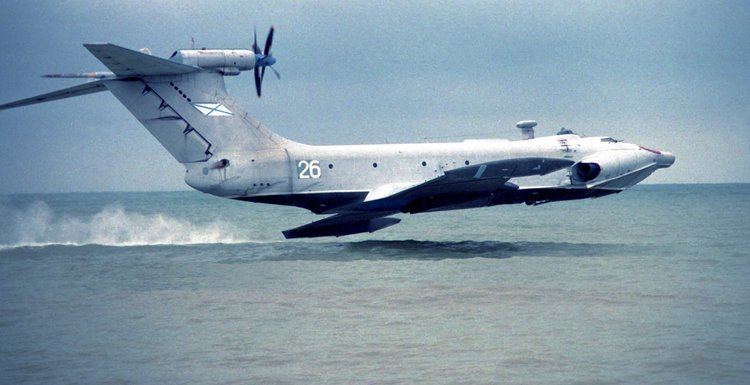
Both takeoff and landing were assisted with large span-length flaps that greatly increased lift and could capture PAR thrust for increased air pressure. Water landings were assisted with a hydro-ski that extended out of the belly of the craft below the main wings.

The front end of the Orlyonok was hinged behind the radome and the whole assembly could open sideways to speed disembarkation of the infantry it carried, or of a BTR armoured personnel carrier. The Orlyonok had a built in folding ramp that allowed it to load and unload vehicles with no external support.
There were plans to resume production of the Orlyonok. The craft would be built in Petrozavodsk.
Production
Overall only five units were built:
The A-90 entered military service in 1979. Units S-21, S-25 and S-26 remained in active service at least until 1993.
Operators
Specifications (A-90)
Data from
General characteristics
Performance
Armament
